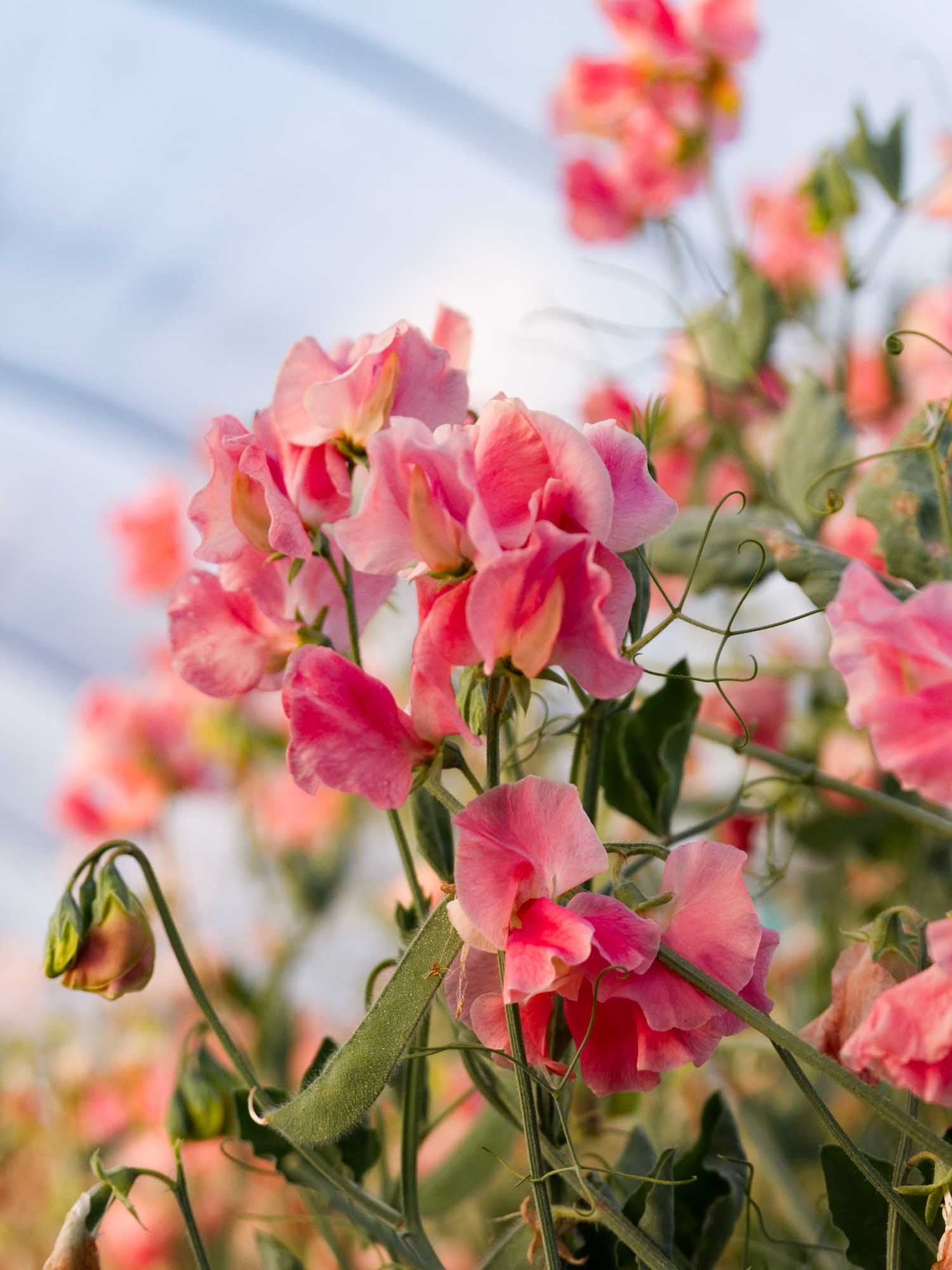From Paddock to Bloom
PREPARING THE GROUND
The prep-work for converting a bare paddock into workable beds, starts months before we plan to plant anything.
First in order to kill the grass & existing weeds without the use of chemicals & sprays, we cover the the soil with tarps / black polythene. Over winter this mainly works to block the sunlight, while over summer the heat of the sun on the black also cooks the grass in the intense heat. We've found that under the tarps we had down over winter the worms turned the decomposing grass & weeds into worm castings.
After a 3–6 months we take the tarps off, we dig out any dock-weed still clinging to life, and plough the ground into raised beds. In subsequent years we are predominately no–till, but after painstakingly broadforking bare–ground the very first season we conceded to the need of machinery to get things started.
While tarps are our preferred method of killing grass - it really does do the best job - when we don't have the luxury of time we do resort to weedspraying the ground first (& then tarping).
Before planting out we wheelbarrow & rake out a couple inches of locally sourced compost onto the beds.
STARTING SEEDS
We predominately grow a range of annuals, almost all started from seed at our farm (except for any of the harder flowers, like lisianthus & ranunculus which are best left for the professionals to start on our behalf).
We start most of our seeds in soil blocks as opposed to punnets & cell trays typically used. While the soil blocks are a bit more labour intensive initially, we've found the benefits in the end justify this extra effort. Soil-blocks help reduce the potential transplant shock when planting out, and are also definitely faster to plant instead of trying to carefully wrangle plants out of cells. Making our own soil mix is part of what makes them more labour intensive, but we enjoy having the control of creating our own recipe and what we put in it.
PLANTING OUT

Once we've nursed the little seedlings into life and they're almost ready to be planted out, we start hardening them off. To minimise weed pressure we grow most of out larger spaced plants in weedmat with holes pre-burned into various grid spacings. The weedmat we use is thick & hardy and should last us many, many seasons. We also plant all the loser plants without weedmat and keep up with hoeing until the plants get big enough to shade out the weeds.
Surprisingly irrigation is still very important even in the lush Taranaki. We use drip–tape as a very water efficient system to slowly & deeply water, minimising wastage & reducing foliar diseases overhead watering can promote.
We grow our plants slightly closer together than normal, this creates a greater abundance of blooms per square meter while also helping our plants create a foliage canopy blocking light to any weeds that do try to grow.
To help keep our plants happy & healthy we regularly foliar feed them with liquid seaweed, and hydrolysed fish emulsion and other natural fertilisers as needed.
EXCEPTIONS
It is very important to us to avoid using harsh chemicals where ever possible, however we have found as we scale up we've had to resort to using on occasion different 'home gardener' fungicides, insecticides and herbicides as when things go wrong, we are not in a position to be able to afford to lose a crop. But it is definitely our intention to refine what and how we grow, so we do not rely on such chemicals. We'd definitely much rather fight all the bad with the 'good', and try grow the healthiest plants possible that are less likely to succumb to anything.
HARVEST
After all the sweat, tears, stars aligning & much patience, eventually it's harvest time. We hand pick each bloom at their precise optimum in the morning or late evening when they're the most naturally hydrated. We harvest direct into buckets of water (often in the warmer months using commercial hydrating solutions), leaving them to condition for a few hours up to 24 hours in our chiller, ready to be arranged & delivered.






